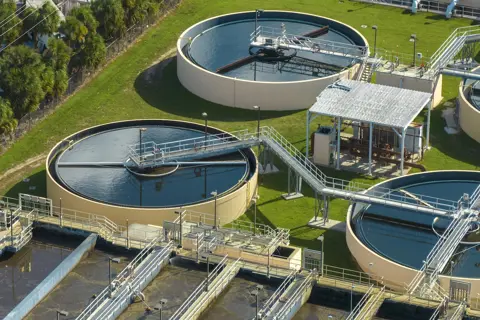
Pharmaceuticals improve the quality of life for humans and animals, but they can also pollute the environment. Active pharmaceutical ingredients (APIs) are designed to interact with the body’s physiological processes and are often chemically stable to be able to reach the organs they target and produce the desired effects. Many biological systems are evolutionarily conserved, meaning that drug targets in humans are also present in other species, particularly vertebrates. Consequently, pharmaceuticals can unintentionally affect organisms that are inadvertently exposed to them.
Understanding Ecopharmacovigilance
Ecopharmacovigilance (EPV) is an extension of the traditional pharmacovigilance system, which focuses on the safety of pharmaceuticals for human health. EPV, however, shifts the focus to the environment, addressing the potential risks that pharmaceuticals pose to ecosystems. This includes monitoring the presence of pharmaceuticals in the environment, assessing their impact on non-target organisms, and preventing their adverse effects. EPV aims to ensure that significant environmental issues associated with pharmaceuticals in the environment are identified in a timely way and addressed appropriately.
Hundreds of active pharmaceutical ingredients have been found in treated sewage water, surface water, drinking water, groundwater, sediment, soil, and biota. As pharmaceuticals are continuously used, and many of them are designed to resist degradation, they cause chronic environmental exposure. Some pathways for pharmaceutical pollution include household and industrial wastewater, aquaculture, manure application, landfill, and incineration. While it is generally considered that most emissions can be attributed to the excretion of used pharmaceuticals, production sites have also been shown to contribute largely to local pollution “hot spots” with very high concentrations of APIs in receiving waters.
Effects of pharmaceutical pollution
Exposure to pharmaceuticals in the environment has been linked to a wide variety of problematic outcomes, such as impaired reproduction in fish, renal failure in vultures, as well as altered growth and reproduction in aquatic invertebrates. Furthermore, the presence of antibiotics in the environment can lead to new forms of antimicrobial resistance and further spread of already resistant strains. Antimicrobial resistance (AMR) is regarded as one of the greatest threats to health, with bacterial AMR directly causing an estimated 1.27 million deaths globally in 2019.
Despite the ecological damage they can cause, for most pharmaceuticals used today, there is very limited knowledge of their potential environmental risk. To illustrate this gap in knowledge, in 2024, Spilsbury and colleagues concluded that there was enough data to perform an environmental risk assessment per European guidelines for only 1.5 % of the pharmaceutical substances approved for sale in the European Economic Area.

The Role of Ecopharmacovigilance
EPV involves several key activities which are all important to minimise the environmental impact of pharmaceuticals:
- Regular environmental monitoring of contamination to understand the distribution and concentration of various pharmaceuticals in the environment and to identify contamination hot spots.
- Evaluation of the potential risks posed by pharmaceuticals to non-target organisms, including the study of toxicity, persistence, and bioaccumulation of drugs in different environmental compartments.
- Implementation of regulations and guidelines to control the release of pharmaceuticals into the environment. This includes setting limits for permissible concentrations of drugs in industrial and household wastewater and promoting the use of pharmaceuticals with less harmful effects on the environment.
- Raising awareness among healthcare professionals and the public about the proper use, disposal, and environmental impact of pharmaceuticals. Educational campaigns can encourage responsible behaviour and reduce the unnecessary prescription and improper disposal of drugs.
- Investing in research to develop advanced wastewater treatment technologies and greener pharmaceuticals can significantly reduce the environmental footprint of pharmaceuticals.
Challenges and Future Directions
Despite the progress made in EPV, several challenges remain. One of the primary obstacles to EPV is the lack of comprehensive and harmonised data on the environmental occurrence and effects of many pharmaceuticals. Additionally, the complexity of ecosystems and interactions between different contaminants in the environment makes it difficult to predict long-term effects accurately.
Other examples of challenges are the complex and globalised production chains of pharmaceuticals and the lack of transparency of these processes, making it difficult to analyse and target emissions. Improved wastewater management has the potential to markedly reduce pharmaceutical emissions, both in terms of production and use. However, advanced treatment of wastewater from households and healthcare facilities is today very limited, even in countries with the economy to implement such solutions.
To address these challenges, a multidisciplinary approach is needed. Collaboration between scientists, regulators, pharmaceutical companies, healthcare providers, prescribers, pharmacies and the public is essential to developing effective strategies for managing pharmaceutical pollution. Furthermore, international cooperation is crucial, as pharmaceutical pollution is a global issue that transcends national borders. The One Health approach by the World Health Organization emphasises the interconnectedness of human, animal, and environmental health and embracing EPV as a fundamental part of pharmacovigilance activities is well aligned with the One Health approach.
The increasing awareness of the risks of pharmaceutical pollution has led to the development of several initiatives. These include voluntary initiatives as well as actions to change legislation and to increase awareness among health professionals and the public on how to limit pharmaceutical pollution and reduce their risk. Also, several policies and regulations concerning chemical pollution have been introduced over the last decade which are increasingly considering pharmaceuticals, but it should be noted that for example in the EU, pharmaceutical products are exempt from most provisions under the union´s general chemicals legislation.
Access to safe and efficient medicines is vital to human and animal health, but it is also clear that actions to better protect the environment need to be intensified. By monitoring, assessing, and mitigating the impact of pharmaceuticals systematically, EPV can help to protect ecosystems and ensure sustainability while still securing access to medicines.
Read More




